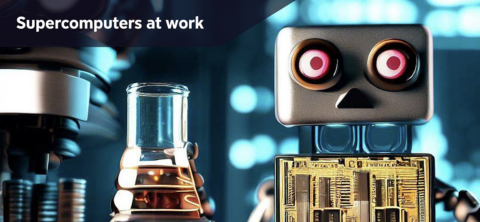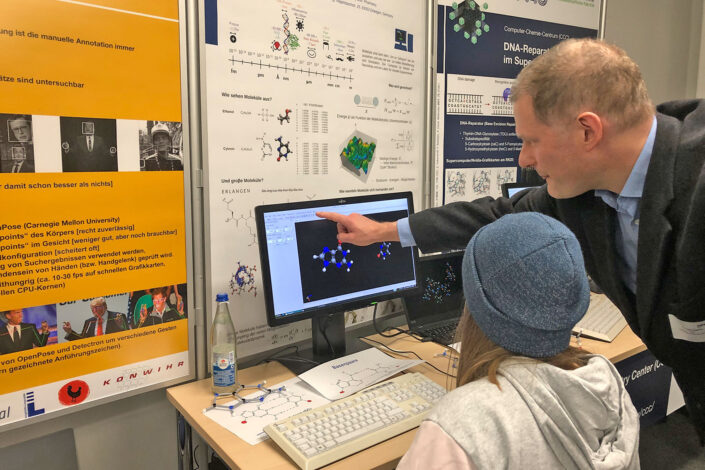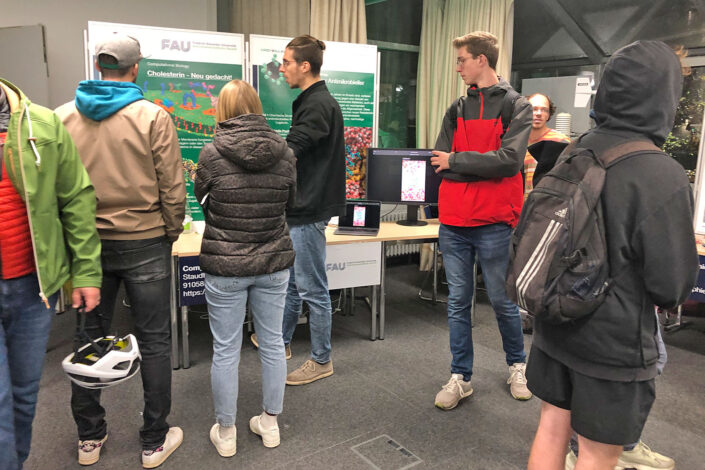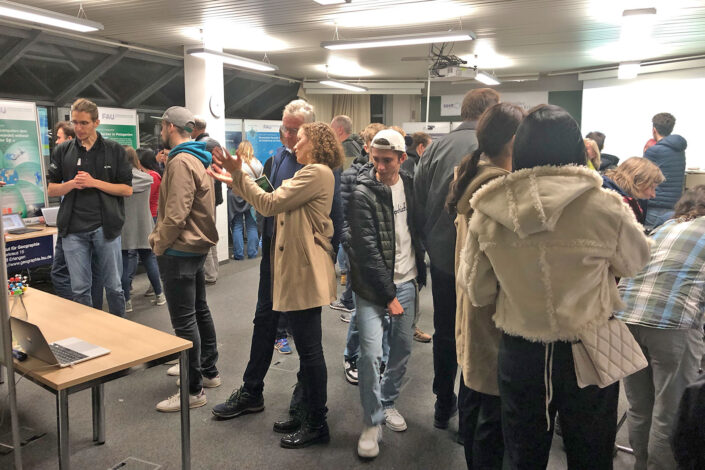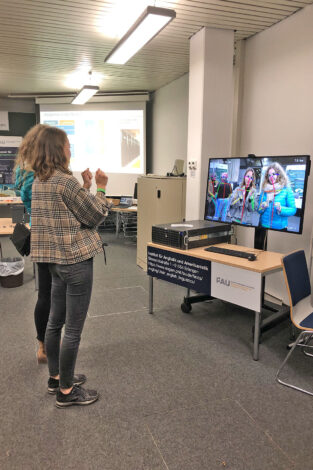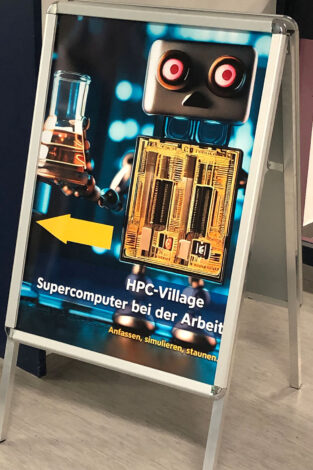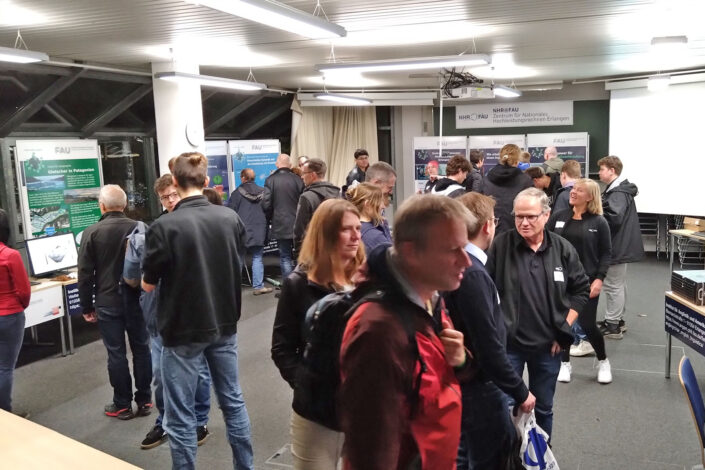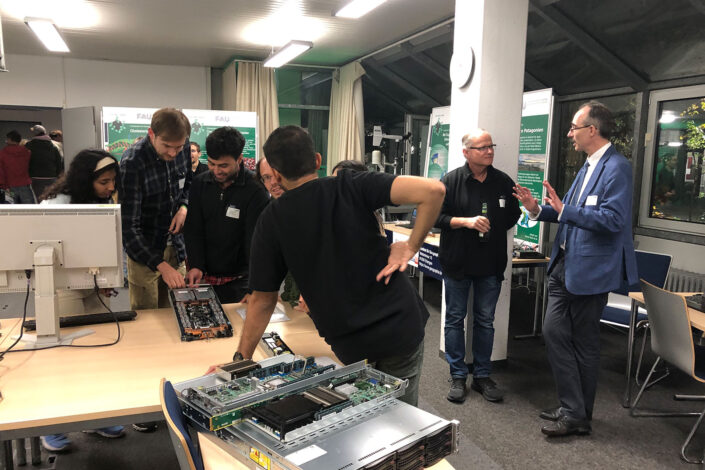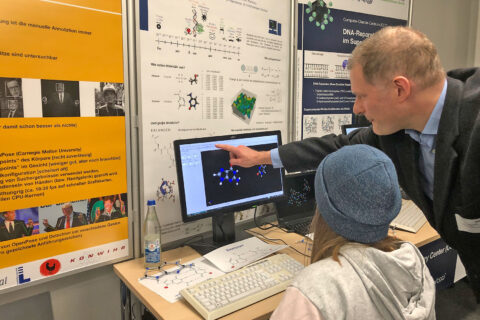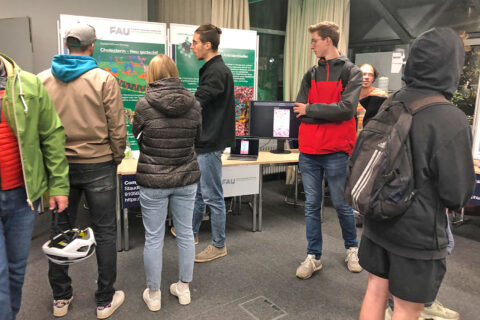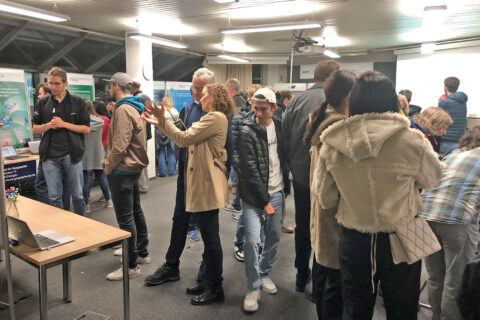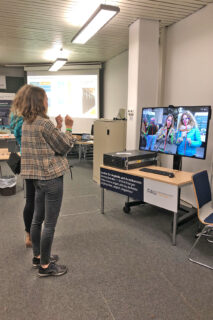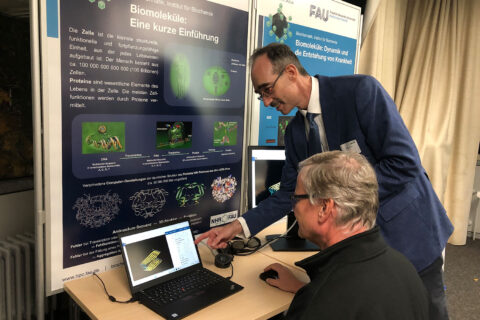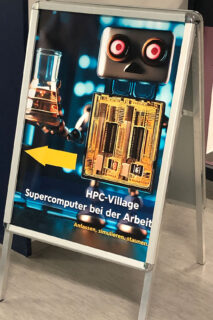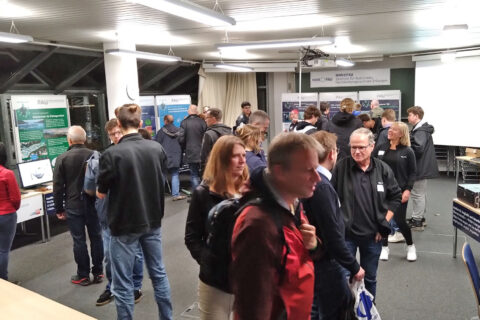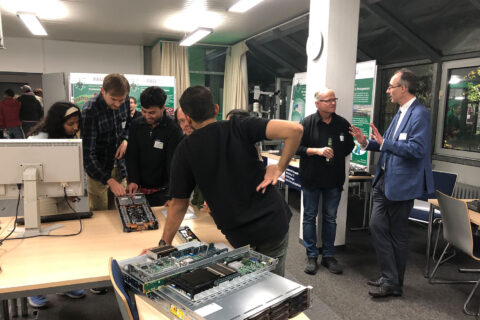“Supercomputers at work” – Long Night of Science 2023
On October 21, the “Lange Nacht der Wissenschaften” (Long Night of Science) again provided thrilling insights into the activities of universities and companies in the greater Nuremberg area. For the eleventh time, the HPC team was part of an event that offers a huge spectrum of opportunities for reaching out to the general public, explaining how their tax money is put to use for advancing computational science. After a great success in 2022 it was decided to launch a retake of the “HPC Village”: Teaming up with several high-profile customers, the technology and the exciting applications of supercomputers were showcased and visitors learned how various FAU institutions, such as medicine, geography, chemistry, and computational biology use simulations on high-performance computers for their research.
NHR@FAU presented tons of old and new high-performance hardware that the non-initiated usually cannot even lay their eyes on, plus a mini-supercomputer comprising five “Raspberry Pi 4” single-board computers churning out ray-tracing images.
The Institute of Geography demonstrated how supercomputers are used to simulate the evolution of glaciers and the antarctic ice shelf, and how forest ecosystems react to the current climate dynamic. Images and videos presented glacier research and 3D glacier models invited the visitors to experiment. Furthermore the Climate Working Group explained how mountains change atmospheric currents and thereby influence the local climate of the past, present and future?
The Professorship for Computational Biology shared results of numerical simulations of immune receptors in biological membranes and of lipid nanoparticles for mRNA vaccines.
The Professorship of Bioinformatics showed how computer simulations can “build” novel antibiotics and how they work.
The Computer Chemistry Center (CCC) demonstrated simulations of the fascinating mechanisms by which DNA can repair itself, and that Artificial Intelligence (AI) and chemistry can complement each other pretty well on a supercomputer.
Not in person but via screen, the Chair of English Philology and Linguistics showed how high-performance AI methods can be used to identify which gestures typically go with spoken words. This research leads to a better understanding of “multi-modal communication,” i.e., communication that uses more than just words to exchange the finer nuances of meaning.
The interest was overwhelming, so the scientists at the various booths had their hands full with explaining top-notch science in layman’s terms. Overall: time and effort well spent.

